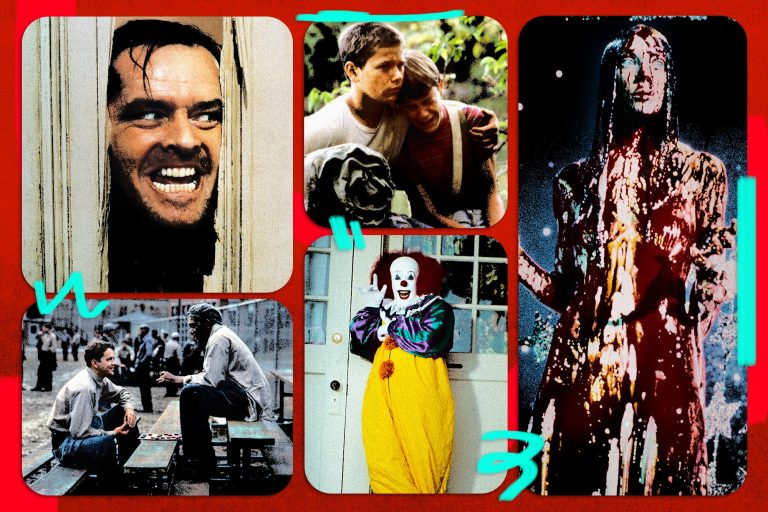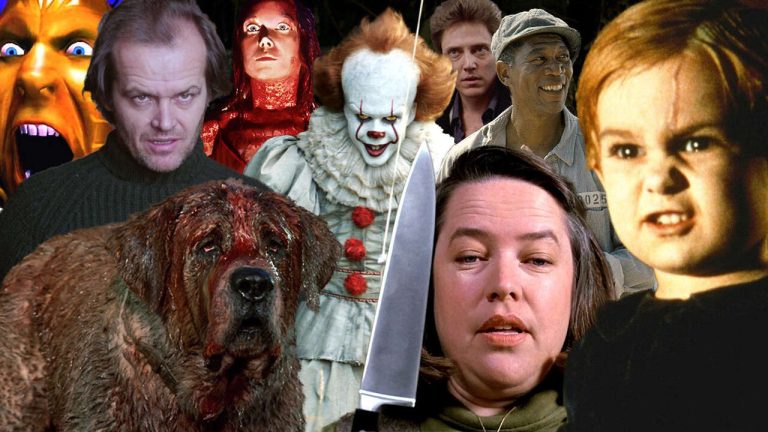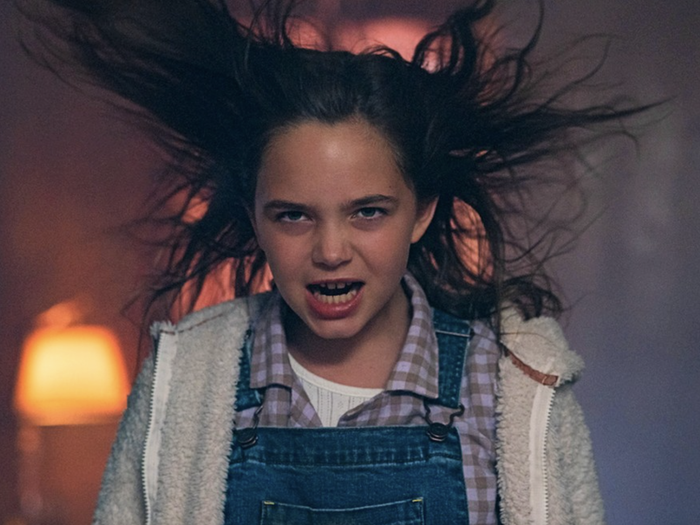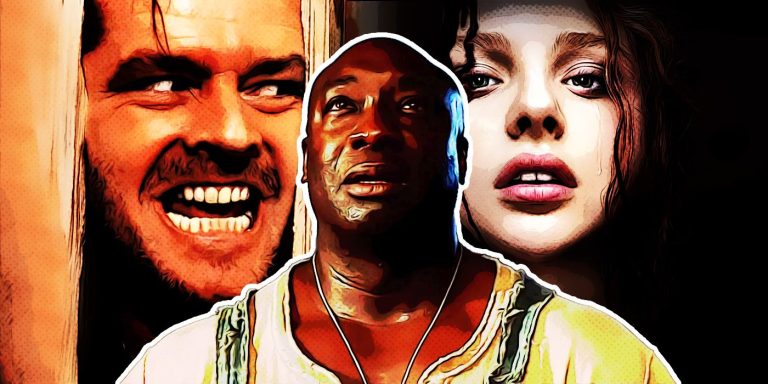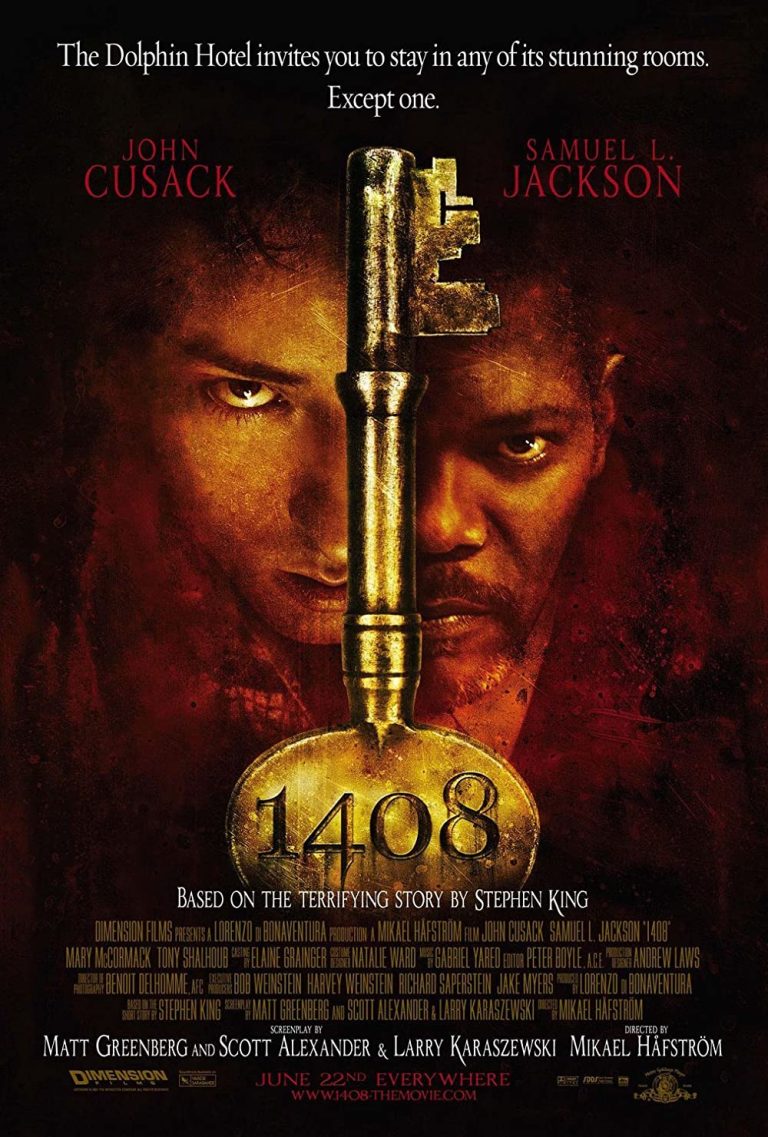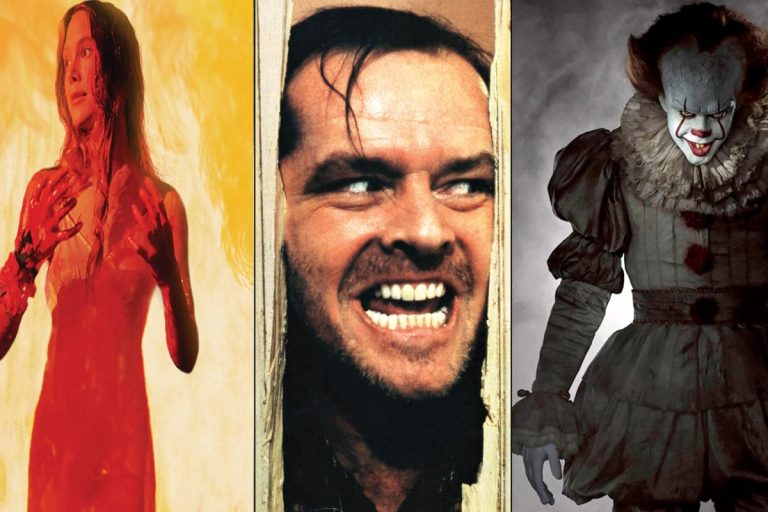Stephen King Movies: A Guide To Haunting Cinematic Imagery
Welcome, fellow movie enthusiasts, to a spine-tingling journey through the haunting cinematic imagery of Stephen King movies. If you’re a fan of horror, suspense, and the macabre, then you’re in for a treat. Prepare yourself for a guide that will take you deep into the dark and twisted worlds created by the master of horror himself.
When it comes to Stephen King movies, there’s no shortage of unsettling and unforgettable moments. From the eerie corridors of the Overlook Hotel in “The Shining” to the terrifying clown lurking in the sewers of Derry in “It,” King’s stories have a way of seeping into your subconscious and leaving you with goosebumps long after the credits roll. But what sets these movies apart from other horror films? It’s the masterful use of haunting cinematic imagery that leaves an indelible mark on our minds.
In this guide, we’ll delve into the artistry behind the camera and explore the visual techniques employed in Stephen King movies that make them so chillingly effective. From atmospheric lighting and clever camera angles to the use of symbolism and foreshadowing, we’ll unravel the secrets behind the hair-raising visuals that have made these films iconic. So, grab your popcorn, dim the lights, and get ready to embark on a journey that will leave you both terrified and captivated. Stephen King movies are about to take you on a rollercoaster ride through the darkest corners of your imagination.
Immerse yourself in the chilling world of Stephen King movies with our ultimate guide to haunting cinematic imagery. From the spine-tingling suspense of “The Shining” to the supernatural horrors of “IT,” we delve into the dark and twisted visuals that make these films unforgettable. Get ready to be captivated by eerie settings, menacing characters, and hair-raising moments that will leave you on the edge of your seat. Join us as we explore the nightmarish landscapes and haunting visuals that define Stephen King’s iconic movies.
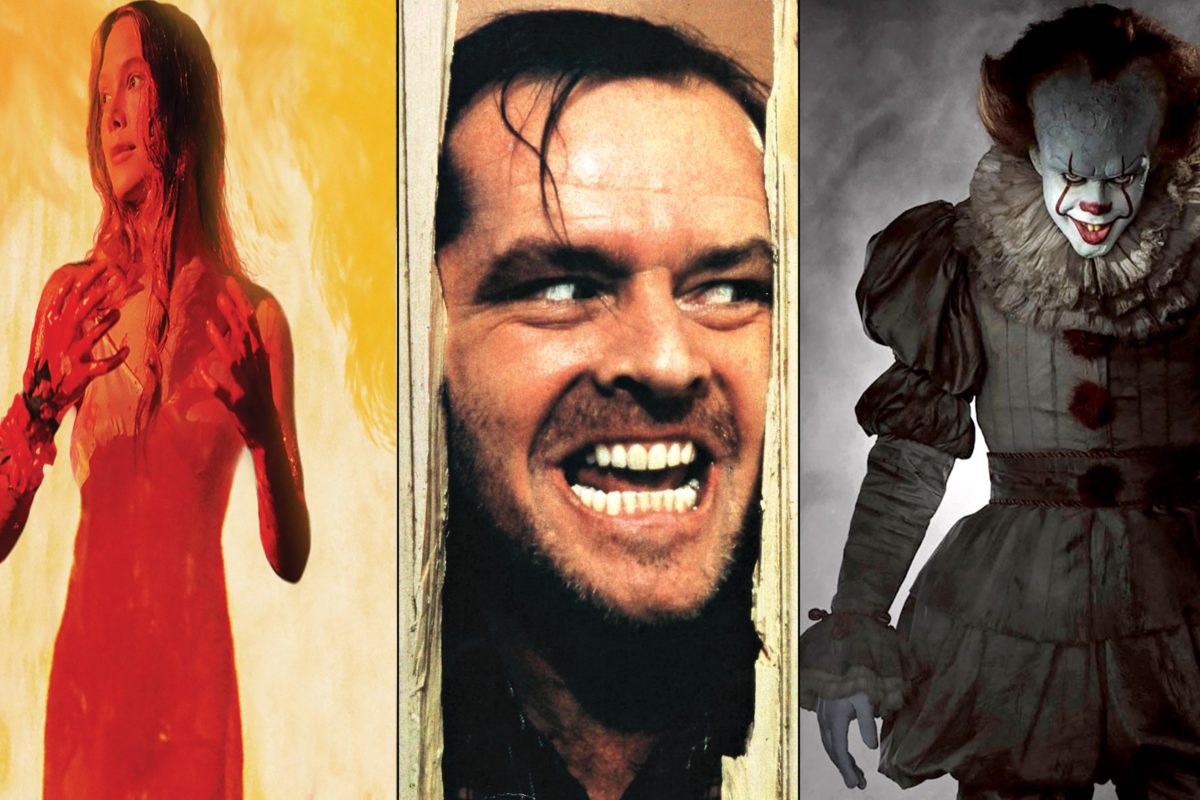
Stephen King Movies: A Guide to Haunting Cinematic Imagery
Stephen King is regarded as one of the greatest horror authors of all time, and his work has been adapted into numerous films that have captivated audiences with their haunting imagery. From the chilling atmosphere to the terrifying creatures that populate his stories, King’s movies are known for their ability to send shivers down your spine. In this article, we will take a deep dive into the world of Stephen King movies, exploring the eerie and unsettling visuals that make them so memorable.
The Power of Visual Storytelling
One of the reasons why Stephen King movies are so effective in delivering scares is the power of visual storytelling. King’s novels are rich in detail, allowing filmmakers to bring his vivid descriptions to life on the screen. From the eerie landscapes to the grotesque creatures, these visuals play a crucial role in creating a sense of dread and unease. Whether it’s the iconic image of Pennywise the Clown in “It” or the haunting overlook hotel in “The Shining,” the visuals in Stephen King movies leave a lasting impression on viewers.
Furthermore, the use of visual imagery allows filmmakers to tap into the primal fears and anxieties that King’s stories evoke. By visually representing these fears, such as the fear of the unknown or the fear of the supernatural, filmmakers are able to intensify the emotional impact of the story. This creates a visceral viewing experience that lingers long after the credits roll. Stephen King movies are not just about jump scares and gore; they are about immersing audiences in a world of terror through the power of visual storytelling.
The Haunting Atmosphere
One of the defining features of Stephen King movies is the haunting atmosphere that permeates every frame. From the gloomy settings to the atmospheric lighting, these films create a sense of foreboding that keeps viewers on the edge of their seats. The use of dark and shadowy visuals adds to the suspense, making even the most mundane scenes feel eerie and unsettling.
Additionally, the haunting atmosphere is often enhanced by the haunting musical scores that accompany these films. The right soundtrack can create a sense of unease and heighten the tension, making the audience feel as if they are being drawn deeper into the nightmare. Whether it’s the iconic theme from “Halloween” or the haunting melodies of “The Shining,” the music in Stephen King movies plays a crucial role in setting the tone and enhancing the overall cinematic experience.
The Monsters Within
Stephen King movies are known for their terrifying creatures and monsters that lurk in the shadows. These monstrous beings are not just physical manifestations of evil; they also represent the internal demons that haunt the characters. From the demonic Pennywise to the possessed animals in “Pet Sematary,” these creatures embody the darkness that resides within the human psyche.
By personifying these inner demons, Stephen King movies explore the depths of human fears and anxieties. They force us to confront our own darkness and examine the choices we make when faced with adversity. The monsters in these films serve as a metaphor for the struggles and temptations that we all face in our lives, making them all the more terrifying and relatable.
The Iconic Imagery of “It”
When it comes to haunting cinematic imagery, one Stephen King movie that stands out is “It.” The iconic imagery of Pennywise the Clown has become synonymous with the horror genre. From his menacing grin to his blood-red balloons, Pennywise is a visual representation of pure terror. The film’s use of dark and eerie visuals, combined with Bill Skarsgård’s chilling performance, creates a truly unforgettable and nightmarish experience.
In addition to Pennywise, “It” also features a haunting setting in the form of the town of Derry. The decaying buildings, fog-covered streets, and creepy sewers add to the overall sense of dread and unease. The combination of these haunting visuals and the compelling story of a group of outcast kids facing their worst fears makes “It” a must-watch for any fan of Stephen King movies.
The Terrifying Overlook Hotel in “The Shining”
Another Stephen King movie that is renowned for its haunting imagery is “The Shining.” The Overlook Hotel, with its grand but eerie architecture, serves as a character in itself. The long hallways, the mysterious room 237, and the iconic elevator full of blood are just a few examples of the unsettling visuals that make this film so memorable.
Director Stanley Kubrick masterfully crafted the atmosphere of “The Shining,” using a combination of meticulous set design, striking cinematography, and unsettling camera angles. The result is a film that is visually stunning and deeply unsettling. It’s no wonder that “The Shining” has become a classic in the horror genre and continues to haunt audiences to this day.
Other Haunting Stephen King Movies
While “It” and “The Shining” may be the most well-known examples of haunting cinematic imagery in Stephen King movies, there are many other films that deserve recognition. From the eerie town of Jerusalem’s Lot in “Salem’s Lot” to the nightmarish creatures in “The Mist,” these films showcase the diverse and chilling visuals that have made Stephen King a household name in horror.
Whether it’s the twisted visions of “1408” or the haunting small-town atmosphere of “Children of the Corn,” Stephen King movies offer a wide range of terrifying visuals that will leave you with a lasting sense of unease. These films tap into our deepest fears and anxieties, reminding us that the real monsters may be closer than we think.
Conclusion
Stephen King movies have a reputation for their haunting cinematic imagery, and rightfully so. From the power of visual storytelling to the creation of a haunting atmosphere, these films immerse audiences in a world of terror. Whether it’s the iconic imagery of Pennywise in “It” or the unsettling visuals of the Overlook Hotel in “The Shining,” Stephen King movies leave a lasting impression on viewers. So, if you’re in the mood for a spine-chilling cinematic experience, dive into the world of Stephen King movies and prepare to be haunted.
Key Takeaways: Stephen King Movies: A Guide to Haunting Cinematic Imagery
- Stephen King movies are known for their haunting and chilling imagery that stays with you long after the credits roll.
- The use of atmospheric settings and eerie cinematography creates a sense of unease and tension throughout the films.
- King’s iconic characters come to life on the screen, invoking fear and empathy in equal measure.
- The movies often explore deep psychological themes, delving into the darkness of the human mind.
- Stephen King movies are a masterclass in storytelling, combining horror, suspense, and emotional depth to captivate audiences of all ages.
Frequently Asked Questions
1. What are some iconic Stephen King movies that showcase haunting cinematic imagery?
Stephen King is known for his captivating storytelling and ability to create chilling atmospheres on the big screen. Some iconic Stephen King movies that showcase haunting cinematic imagery include:
1. “The Shining” (1980): Directed by Stanley Kubrick, this psychological horror film is filled with eerie visuals and a sense of dread that lingers long after the movie ends.
2. “It” (2017): This adaptation of King’s novel about a shape-shifting clown terrorizing a small town features stunning cinematography and creepy visuals that will give you nightmares.
2. How does Stephen King incorporate haunting imagery into his movies?
Stephen King is a master at creating haunting imagery in his movies. He often explores themes of fear, isolation, and the supernatural, which lend themselves to creating a sense of unease and dread. King’s use of vivid descriptions in his novels translates well to the visual medium of film, allowing directors to bring his terrifying visions to life on screen.
Additionally, King’s stories often feature iconic and memorable visuals, such as the creepy twins in “The Shining” or the red balloon in “It.” These images stick with viewers long after the movie ends, contributing to the lasting impact of his films.
3. Are there any Stephen King movies known for their unique visual style?
Yes, several Stephen King movies are known for their unique visual style. One notable example is “Carrie” (1976), directed by Brian De Palma. The film incorporates dreamlike sequences and slow-motion shots to create a surreal and otherworldly atmosphere.
Another example is “Misery” (1990), directed by Rob Reiner. The film’s use of dark lighting, claustrophobic settings, and intense close-ups adds to the sense of horror and tension.
4. How does Stephen King’s writing style influence the visual representation of his stories?
Stephen King’s writing style, characterized by rich descriptions and vivid imagery, greatly influences the visual representation of his stories. Directors often rely on King’s detailed descriptions to create the visual world of his novels.
King’s ability to evoke a sense of place and atmosphere through his writing helps directors capture the essence of his stories on screen. Whether it’s the dilapidated Overlook Hotel in “The Shining” or the small town of Derry in “It,” King’s writing provides a strong foundation for creating visually striking and haunting cinematic imagery.
5. What role does cinematography play in Stephen King movies?
Cinematography plays a crucial role in Stephen King movies, as it helps bring his stories to life and enhances the overall viewing experience. Through the use of camera angles, lighting, and composition, cinematographers create the visual tone and mood of the film.
For example, in “The Shawshank Redemption” (1994), the cinematography captures the oppressive and claustrophobic atmosphere of the prison, while also highlighting moments of hope and redemption. In “The Mist” (2007), the cinematography adds to the sense of isolation and dread, emphasizing the characters’ fear and uncertainty.
A Haunting In Salem | Full Horror Movie | Based On True Events!
Final Summary: Unlocking the Haunting Cinematic Imagery of Stephen King Movies
As we conclude our journey through the captivating world of Stephen King movies, it’s clear that the master of horror has left an indelible mark on the film industry. From spine-chilling adaptations of his iconic novels to original screenplays that send shivers down our spines, each film is a testament to King’s unparalleled ability to craft haunting cinematic imagery.
Throughout this guide, we’ve explored the key elements that make Stephen King movies so hauntingly memorable. We’ve delved into the power of suspense and tension, the importance of well-developed characters, and the art of visual storytelling. From the iconic red balloons of “It” to the eerie isolation of the Overlook Hotel in “The Shining,” King’s movies transport us to nightmarish realms that stay with us long after the credits roll.
But it’s not just the scares that make Stephen King movies so enduring. It’s the way they tap into universal fears and emotions, reminding us of our own vulnerabilities and the darkness that lurks within. Whether it’s a supernatural entity, a deranged killer, or the demons of our own minds, King’s stories hold a mirror up to our deepest fears, forcing us to confront them head-on.
So, the next time you find yourself craving a spine-tingling movie night, look no further than the world of Stephen King. From the iconic classics to the latest adaptations, there’s no shortage of chilling tales to keep you on the edge of your seat. Prepare to be mesmerized by the haunting cinematic imagery that has made Stephen King a household name in the realm of horror. Get ready to dim the lights, grab your popcorn, and step into a world where nightmares come to life.

